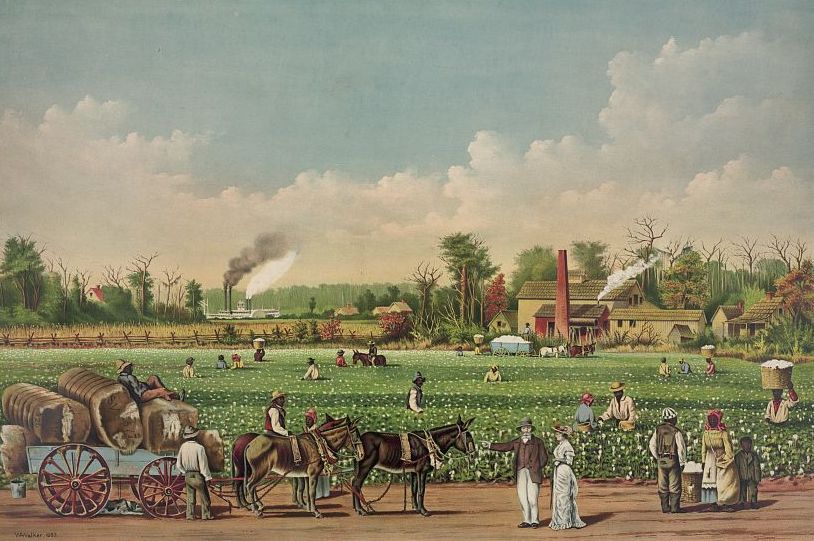What We Review
Labor, Culture, and Economy in African American History
Studying labor, culture, and economy is essential for understanding how slavery and African American history shaped the United States. Enslaved people’s work supported America’s growth, while their lives helped form a unique culture that still influences society today. This article explores key themes, including the enslavement of Black people, specialized roles within enslaved communities, different labor systems, and the long-term influence of slave labor on the American economy.
Transitioning through each section will help clarify how labor and culture were intertwined and why it still matters to modern conversations about race and economics.
Understanding Enslavement of Black People
The enslavement of African-descended people in North America forced men, women, and children into unpaid labor while denying them autonomy over their lives. Although this system took root in the 17th century, it expanded over time into a powerful institution that shaped social, economic, and political relationships for generations. Enslavers treated Black individuals as property, subjecting them to exploitative conditions that could shift daily based on labor demands and the decisions of those in power.
Experiences of enslaved people varied widely. Many endured grueling workdays in agricultural fields, from sunrise to sunset, while others labored in domestic settings under constant surveillance. On a typical plantation, the day often began before dawn with chores like feeding livestock. Field laborers were then forced to spend long hours harvesting cotton, sugar cane, or tobacco, while overseers closely tracked output. Any sign of resistance or a perceived lack of productivity could provoke swift and brutal punishment.
Yet amid this system of oppression, enslaved people forged community bonds and preserved cultural traditions rooted in African heritage. Through storytelling, music, spirituality, and family ties, they nurtured resilience—laying foundations that would profoundly influence American culture.
Specialized Roles of Enslaved People
Enslaved people performed a wide range of tasks, not just in rural plantations but also in cities. Some were skilled laborers responsible for carpentry, blacksmithing, or tailoring, which required unique talents carried over from Africa. In urban centers, many enslaved workers functioned as chefs, maids, and construction workers. Others worked in factories, churches, or even colleges, hired out to these institutions by the individuals who claimed to own them.
- Domestic Laborers: Engaged in cooking, cleaning, and childcare within a household.
- Agricultural Workers: Tended and harvested crops such as rice, indigo, sugar, or tobacco in the fields.
- Skilled Laborers: Worked as blacksmiths, carpenters, painters, healers, weavers, or musicians.
Occasionally, enslavers switched workers’ roles according to their own preferences. Therefore, a person who formerly worked in domestic service might be sent to the fields, disrupting family ties and daily routines. Enslavers justified these practices by treating people as commodities—valued not for their humanity but for their ability to generate profit.
Labor Systems in Enslaved Communities
Labor systems determined the pace, supervision, and community life for enslaved people. Two significant forms were the gang system and the task system. Both systems were designed to maximize productivity, but each one influenced cultural expressions, such as music and language, in different ways.
The Gang System
The gang system grouped enslaved laborers to work from sunup to sundown under close supervision. Overseers, often armed, sped up the work rate to ensure high yields of crops like cotton, sugar, and tobacco. Enslaved people were treated much like a chain gang, forced to labor in unison with little chance for rest.
However, music became an important tool for endurance. Work songs, often sung in English or incorporating African rhythms, helped keep a steady work pace and fostered a sense of solidarity. Therefore, these songs reflected a subtle form of resistance, preserving cultural identity while easing the hardships of field labor.
The Task System
The task system was common in coastal regions where crops like rice and indigo thrived. Under this arrangement, enslaved people received quotas for the day and earned limited free time once tasks were done. Consequently, there was less direct oversight, allowing a bit more space for developing personal pursuits.
In these areas, cultural and linguistic practices had room to flourish. For instance, the Gullah creole language, formed by blending English with various West African languages, thrived among communities in the Carolina lowcountry. Many enslaved workers used this language to maintain ties to African heritage and strengthen bonds with each other.
Economic Impacts of Slave Labor
The labor of enslaved African Americans formed the backbone of America’s early economy. Planters in the Southern states made huge profits from crops like rice, tobacco, and cotton. However, Northern cities also benefited from these profits, participating in trade, shipping, and the development of related industries.
For instance, cities like New York and Boston grew rich through processing and selling raw materials produced by enslaved people. Their textile factories depended on Southern cotton, while banks and insurance companies financed plantation operations. This economic interdependence tied both regions together. Therefore, although the North banned slavery earlier than the South, it still gained from the extensive labor system that exploited Black workers.

Legacy of Slavery on Wealth Disparities
Although slavery was eventually abolished, its legacy created enormous gaps in wealth between Black and white communities. Enslaved people seldom received wages, and social or legal barriers prevented them from owning property. Therefore, little to no wealth could be passed down to future generations of African Americans.
Over centuries, this disparity widened. Comparatively, white families could accumulate property, pass on inheritances, and invest in education. Meanwhile, Black families faced discrimination, segregation laws, and few opportunities to build assets. Consequently, this scarcity of resources shaped social and economic conditions that persist even today. Recognizing these historical injustices is vital for understanding persistent disparities in income, housing, and education.
Required Sources
1. Sugar Cane Harvest, Antigua, West Indies, 1823
This image depicts enslaved people harvesting sugar cane in the Caribbean. During the colonial era, sugar production was a driving force of the Transatlantic Slave Trade. Therefore, the labor system both enriched European powers and accelerated the spread of slavery to new regions. The long days spent cutting cane mirror the gang system used in many parts of the Americas. By examining this scene, learners see how difficult and hazardous the fieldwork truly was, as well as how central it was to the global economy.
2. Broadside Advertising “Valuable Slaves at Auction” in New Orleans, 1859
This broadside from New Orleans illustrates the commodification of enslaved people. Such advertisements listed their skills, ages, and physical capabilities to entice buyers. In effect, enslaved individuals were marketed as goods, emphasizing the reality that they were property under the law. The document directly links to the notion of specialized labor, since enslavers often used these ads to highlight talents like blacksmithing or seamstress work.
3. Rice Fanner Basket, Circa 1863
The rice fanner basket is an example of African craftsmanship adapted to life in the Americas. Enslaved people introduced techniques for cultivating rice, bringing knowledge from West Africa’s rice-growing regions. These baskets separated rice grains from their husks and facilitated a labor system unique to coastal plantations. Furthermore, the skill and artistry behind making such baskets show how traditional African know-how persisted despite the oppressive system of enslavement.
Each source reveals the harsh reality of slave labor while highlighting the specialized roles and cultural resilience of enslaved communities. By studying these artifacts, one better grasps the historical context of agricultural work, economic systems, and the personal agency enslaved people preserved in the face of adversity.
Quick Reference Chart: Vocabulary and Definitions
| Vocabulary | Definition |
| Enslavement | The condition where individuals are owned by others and forced to work. |
| Gang System | A labor system where enslaved people worked in groups under an overseer from sunrise to sunset. |
| Task System | A labor system where enslaved people worked on individual tasks until completed, often with less direct oversight. |
| Chain Gang | A group of prisoners chained together for forced labor, used to reference the harshness and lack of freedom in labor. |
| Commodification | Treating people as commodities or items for sale, emphasizing exploitation for profit. |
| Gullah | A creole language formed in the Carolina lowcountry, blending English with African languages. |
| Economic Interdependence | A situation where different economies rely on each other for resources and growth. |
Conclusion
Labor, culture, and economy in African American history are deeply connected. The enslavement of Black people provided free labor that fueled the nation’s early prosperity, yet the human cost was staggering. Different labor systems, such as the gang system and the task system, shaped the daily lives of enslaved people and influenced their cultural and linguistic expressions. At the same time, specialized roles, from domestic to skilled labor, demonstrated resourcefulness and resilience. Although slavery ended, its repercussions set the stage for centuries of structural inequality. Recognizing this past is key to understanding modern wealth disparities and cultural innovations that continue to shape the United States.
Sharpen Your Skills for AP® African American Studies
Are you preparing for the AP® African American Studies test? We’ve got you covered! Try our review articles designed to help you confidently tackle real-world AP® African American Studies problems. You’ll find everything you need to succeed, from quick tips to detailed strategies. Start exploring now!
Need help preparing for your AP® African American Studies exam?
Albert has hundreds of AP® African American Studies practice questions, free response, and full-length practice tests to try out.









